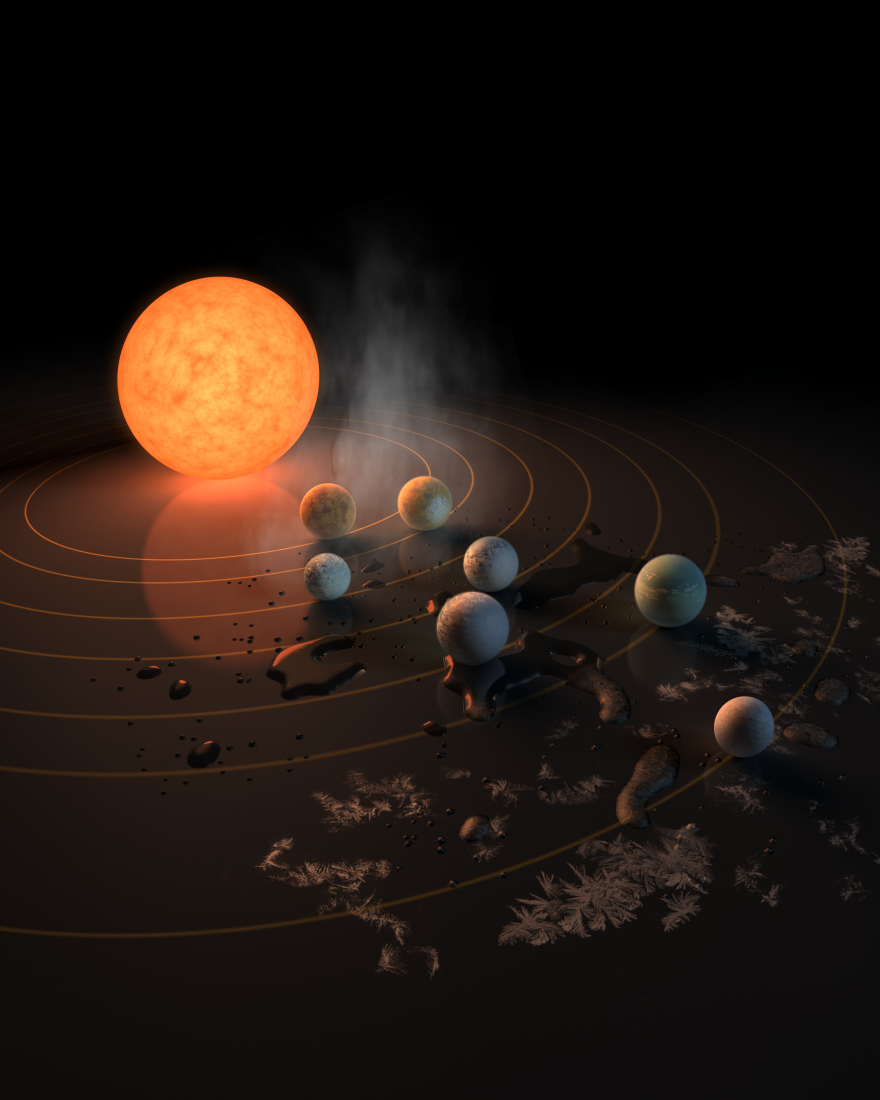It’s been almost 30 years since scientists first discovered their first exoplanet - a planet orbiting a star other than our own sun. But the scientific community is especially excited now with the discovery late last month of the most earth-like exoplanets yet.
The batch of exoplanets orbit TRAPPIST-1, an ultra-cool, dwarf star located in the constellation Aquarius. Three of these exoplanets are in the habitable zone around the star, where rocky planets are most-likely to have liquid water.

Astronomy contributor Jean Creighton is quick to note that scientists haven't actually seen the surface of any of the exoplanets in the TRAPPIST-1 system. "What they look like are little specks on a picture," she explains.
But, scientists have been able to get some basic information about the size of these planets and their proximity to the TRAPPIST-1 star. "What's cool about these seven planets is that we were able simultaneously to measure both their diameter and their mass, which means that you can figure out their density," says Creighton.
"That's why we say seven of them have densities like the earth," she continues. "So that's why it's 'earth-like.' That doesn't mean that we've established that it has an atmosphere necessarily... we certainly don't know if there are any creatures walking on there."
While the discovery is groundbreaking, it won't likely result in a trip to a TRAPPIST-1 exoplanet anytime soon. The system is 235 trillion miles away. "Light takes forty years to travel this distance and even if we could travel close to the speed of light, forty years is a long, long time to be in space. At this point, we're not even close to being able to do that," she says.
https://www.youtube.com/watch?v=bnKFaAS30X8








